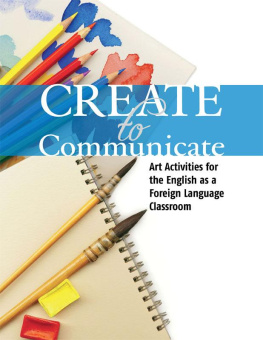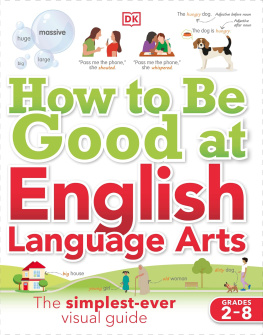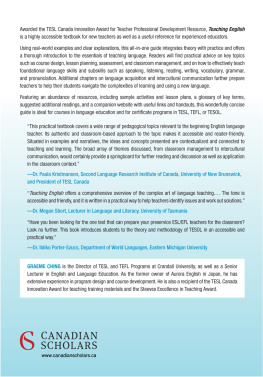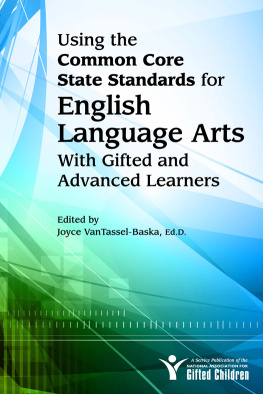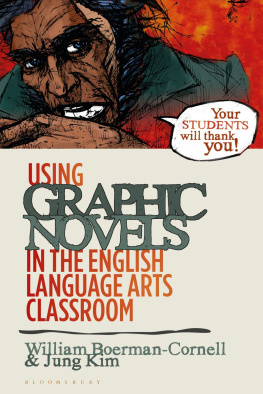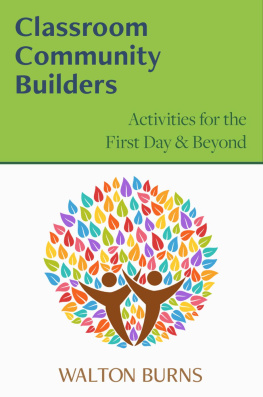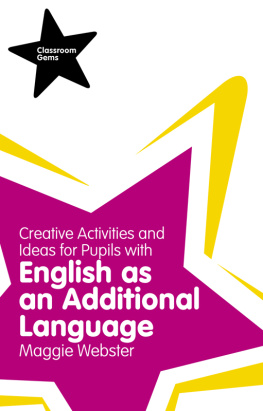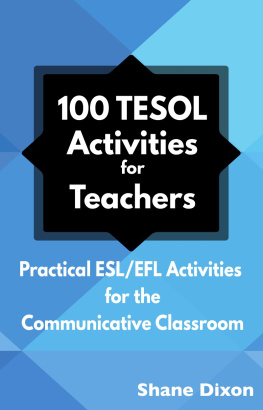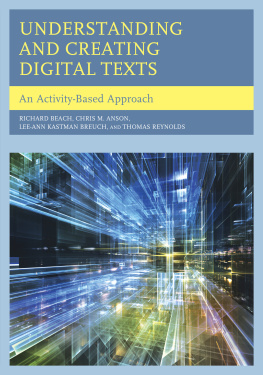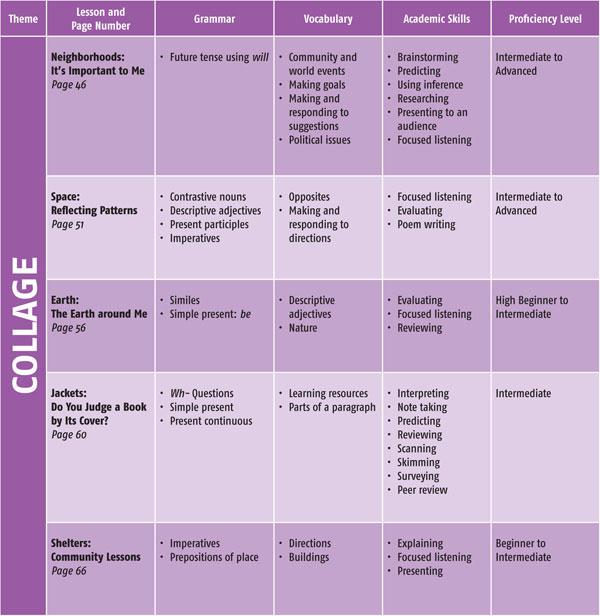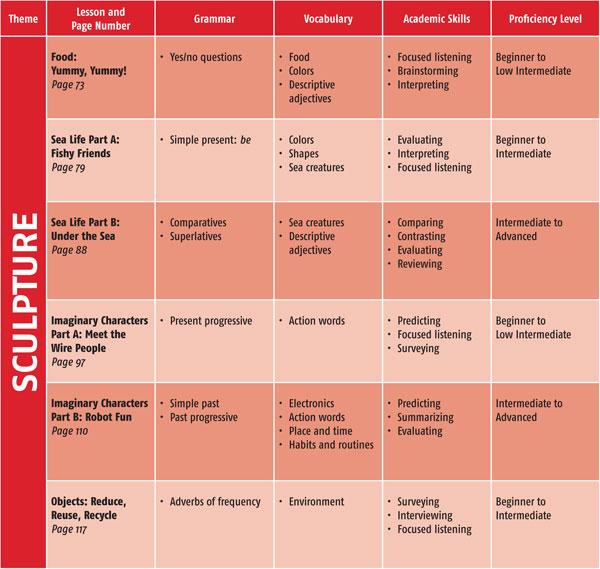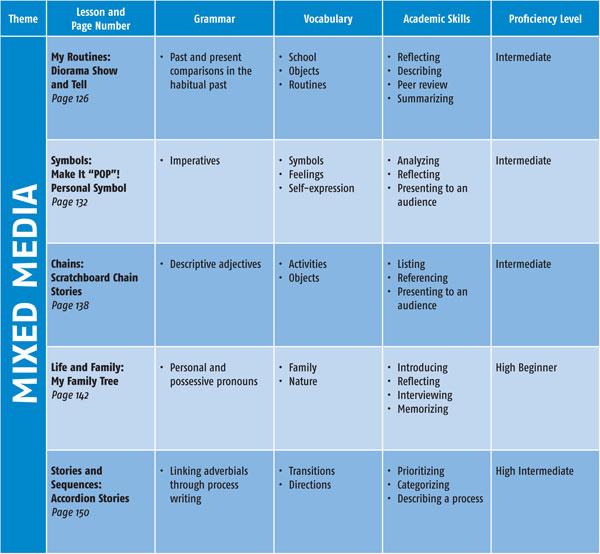Published by:
Office of English Language Programs
Bureau of Educational and Cultural Affairs
United States Department of State
Washington, D.C. 20037
americanenglish.state.gov
First Edition: 2013
| ISBN (print) | 978-1-624-25051-4 |
| ISBN (PDF) | 978-1-624-25052-1 |
| ISBN (ePub) | 978-1-624-25053-8 |
| ISBN (mobi) | 978-1-624-25055-2 |
In this publication, there are many links to other websites. These links to websites do not constitute an endorsement by the U.S. Department of State of the site or the opinions presented therein.
Contents
Rationale
There are unlimited advantages to using the visual arts for developing English language learning skills. The arts can be a source of inspiration, imagination, and motivation for learners. They can engage students in a variety of themes, subjects, and issues, as well as introduce learners to new ways of seeing the world. Most importantly, the arts can provide students with a voice in a world where they have limited English proficiency.
This activity book is intended for English language teachers who would like to reap the benefits that the visual arts provide, but are unsure of where or how to begin. By providing art ideas and guidelines, matched with language objectives, this book seeks to use the arts as a tool to build and strengthen English reading, writing, listening, and speaking skills and develop the confidence students need to take risks and explore within a new language. Designed to supplement regular coursework, the purpose of this book is not to provide art lessons, but rather to provide ideas of how to incorporate the arts into the language classroom to make English accessible and understandable to students.
Organization
The art and language activities in this book are designed for primary and secondary school students. Each activity lists a language objective and suggested skill level. There are four media explored in this book: drawing, collage, sculpture, and mixed media. The activities are designed to be used independently rather than sequentially, giving the teacher the flexibility to choose an activity that best fits the desired topic, language focus, and available art materials of the language classroom.
In addition to flexibility, an important design feature of this book is adaptability. While art materials, language objectives, and skill levels are listed for each activity, most activities can be adapted and modified in numerous ways. Look for modification suggestions at the beginning and end of each lesson labeled as Art Options or Extension Activities, or at the Additional Resources to supplement and enhance the lesson plans. These features enable the teacher to use, adapt, and modify an activity in various ways to best suit the needs of the students.
The below grid is a model of what will be found at the beginning of each lesson:
Objective: This is the language-learning objective for the lesson plan.
Level: This indicates the student level for the lesson.
Materials: This lists the materials needed for the art project.
Teacher Preparation: This is what the teacher will need to do to prepare for the lesson.
Art Options: This will list variations in case the materials listed above do not work in the teachers specific setting.
Selecting an Activity
There are three ways to select an activity to fit the needs of the students.
- Language Focus: The language focus of each activity is placed at the beginning of each activity. Most activities in this book are organized around an authentic communication goal and discrete language structures. These objectives are designed to be adapted and modified to best suit the needs of the students.
- Topic: In each chapter, the activities are organized under topic headings.
- Art Medium or Materials: Each chapter of this activity book is organized by art medium. This enables the teacher to easily search for an activity depending on what materials are available. However, most activities also offer suggestions for art material variations. The Art Options listed at the beginning of each lesson offers valuable suggestions on alternate materials. Likewise, adaptation and modification are encouraged.
Teaching the Lesson
There are no exact rules or steps for making art. The tips outlined below offer broad guidelines and suggestions to take into consideration when creating art with students.
- Choose an appropriate activity for the students.
Before beginning an art activity, read through the activity instructions, extensions, and variations to make sure the activity is suitable or adaptable for the age and language ability levels of the students. Most activities can be adapted and modified in numerous ways to fit the needs of students. - Collect the necessary materials, or alternate materials, needed to complete the activity.
Read the materials list and the instructions for each lesson before beginning the activity with students. If the resources listed in the beginning of the activity are not available, read the Art Options section at the beginning of the activity for ideas on other ways to complete the activity. - Help students plan the basic design of the artwork: the composition.
Most art activities require some planning. The amount and type of planning will depend on the age of the students, the specific activity, and the amount of time desired to spend on the activity. With both two-dimensional and three-dimensional artwork, students have a limited amount of space to work with. The teacher can help students plan how they will use the space provided by asking them to think about the organization or arrangement of the subject(s), the size of the subjects(s), and the desired colors and color combinations to be used. In many cases, the teacher can also show students how to organize the design of a piece of artwork by doing an example with the class, or by demonstrating with a student example.
Art Tips
Tips specific to each art medium can be found at the beginning of each chapter. Listed below are a few tips and suggestions that are common to all art media and activities included in this book.
- If possible, have students bring in old shirts or other old clothes that can be worn over their clothes to protect them from paint, glue, or any other messy art materials being used.
- If students are working with messy materials, try to cover and protect the surfaces students will be working on (desks, tables, and floor) with old newspapers or scrap (recycled) papers. By covering students workspace, the furniture in the classroom will not only be protected but clean-up will also be faster and easier.

